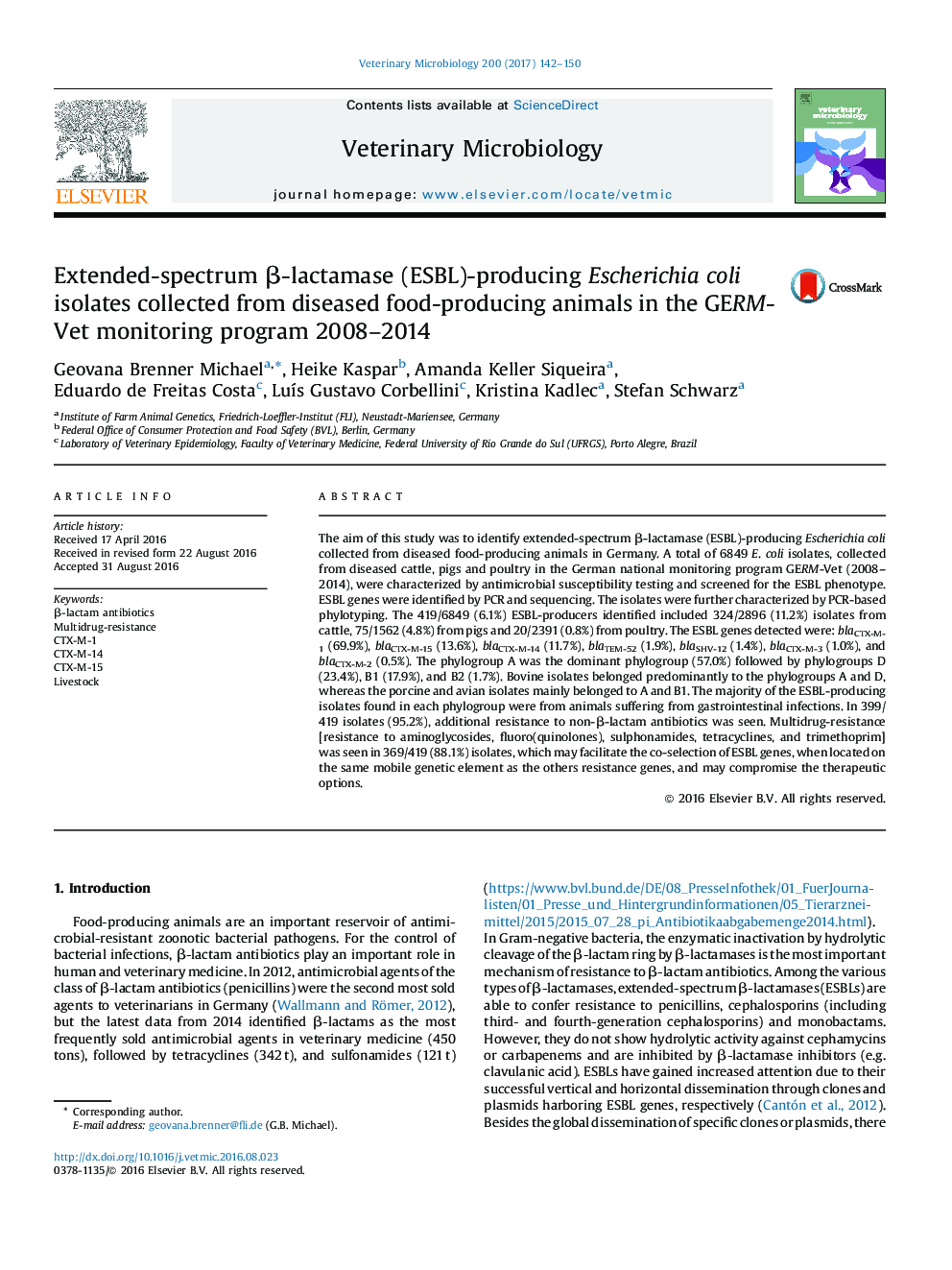| کد مقاله | کد نشریه | سال انتشار | مقاله انگلیسی | نسخه تمام متن |
|---|---|---|---|---|
| 5545378 | 1555323 | 2017 | 9 صفحه PDF | دانلود رایگان |

- 419/6849 E. coli from GERM-Vet 2008-2014 were identified as ESBL-producers.
- blaCTX-M-1, blaCTX-M-15 and blaCTX-M-14 were the most common ESBL genes detected.
- Multi-resistance was seen in 369/419 (88.1%) of ESBL-producing isolates.
- Co-selection of ESBL genes may occur under selection pressure by non-β-lactams.
The aim of this study was to identify extended-spectrum β-lactamase (ESBL)-producing Escherichia coli collected from diseased food-producing animals in Germany. A total of 6849 E. coli isolates, collected from diseased cattle, pigs and poultry in the German national monitoring program GERM-Vet (2008-2014), were characterized by antimicrobial susceptibility testing and screened for the ESBL phenotype. ESBL genes were identified by PCR and sequencing. The isolates were further characterized by PCR-based phylotyping. The 419/6849 (6.1%) ESBL-producers identified included 324/2896 (11.2%) isolates from cattle, 75/1562 (4.8%) from pigs and 20/2391 (0.8%) from poultry. The ESBL genes detected were: blaCTX-M-1 (69.9%), blaCTX-M-15 (13.6%), blaCTX-M-14 (11.7%), blaTEM-52 (1.9%), blaSHV-12 (1.4%), blaCTX-M-3 (1.0%), and blaCTX-M-2 (0.5%). The phylogroup A was the dominant phylogroup (57.0%) followed by phylogroups D (23.4%), B1 (17.9%), and B2 (1.7%). Bovine isolates belonged predominantly to the phylogroups A and D, whereas the porcine and avian isolates mainly belonged to A and B1. The majority of the ESBL-producing isolates found in each phylogroup were from animals suffering from gastrointestinal infections. In 399/419 isolates (95.2%), additional resistance to non-β-lactam antibiotics was seen. Multidrug-resistance [resistance to aminoglycosides, fluoro(quinolones), sulphonamides, tetracyclines, and trimethoprim] was seen in 369/419 (88.1%) isolates, which may facilitate the co-selection of ESBL genes, when located on the same mobile genetic element as the others resistance genes, and may compromise the therapeutic options.
Journal: Veterinary Microbiology - Volume 200, February 2017, Pages 142-150